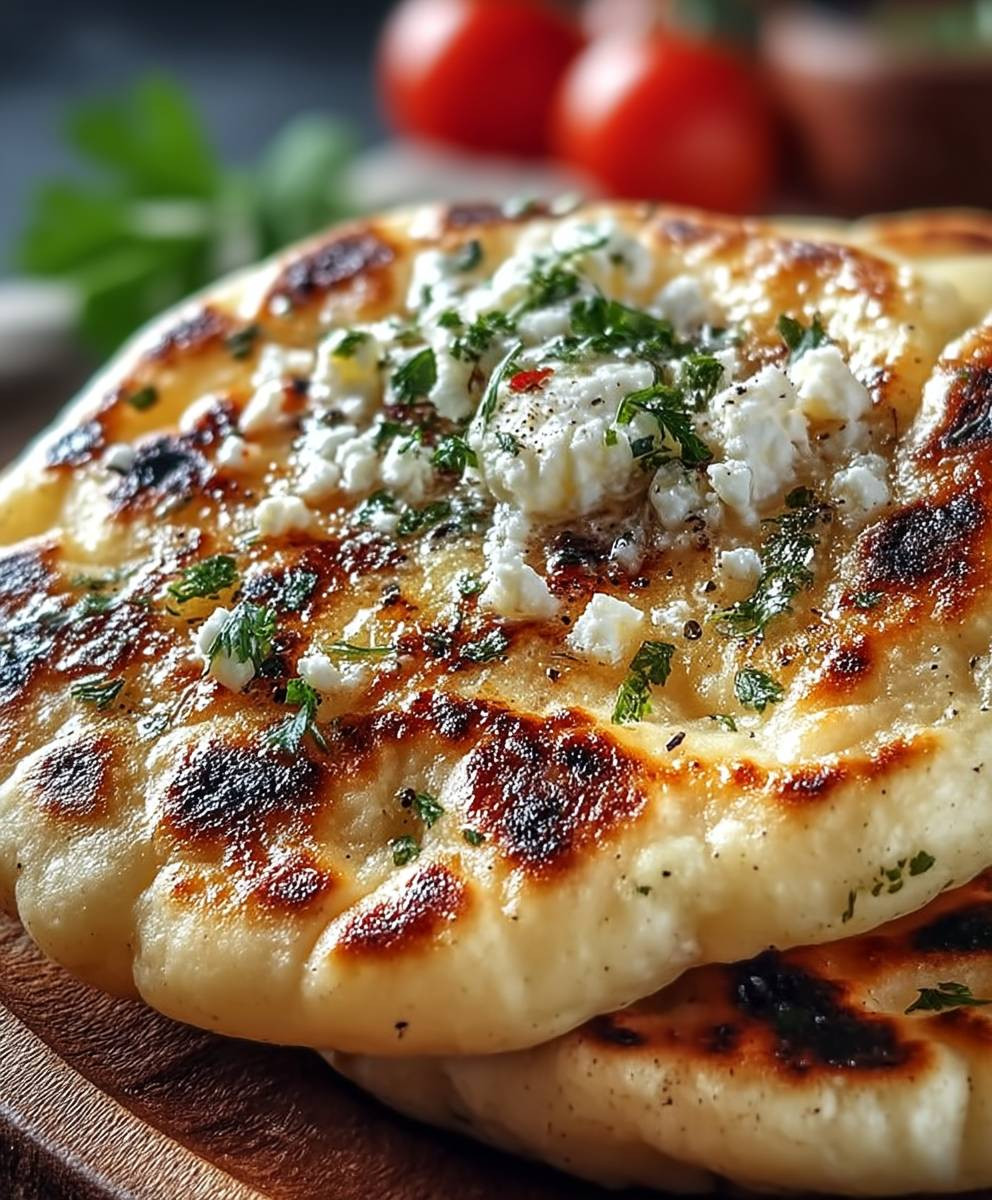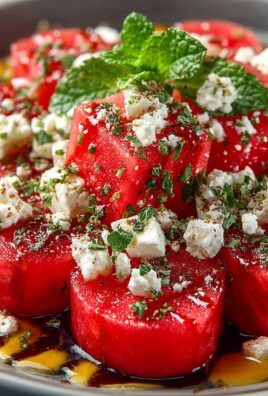Cottage Cheese Flatbread: Prepare to be amazed by this incredibly versatile and surprisingly simple recipe that will revolutionize your quick meal game! Forget everything you thought you knew about flatbread because this version is not only packed with protein but also unbelievably delicious. I stumbled upon this recipe while searching for healthier alternatives to traditional bread, and let me tell you, it has become a staple in my kitchen.
Flatbreads, in various forms, have been a culinary cornerstone for centuries across numerous cultures. From the tandoor-baked rotis of India to the wood-fired pizzas of Italy, these simple breads have nourished generations. While this Cottage Cheese Flatbread might not have ancient roots, it cleverly borrows from that tradition of simple, satisfying sustenance.
What makes this flatbread so irresistible? It’s the perfect combination of a slightly chewy texture with a subtle tang from the cottage cheese, creating a blank canvas for endless flavor combinations. People adore it because it’s quick to make, requiring minimal ingredients and effort. Whether you’re craving a savory pizza-style flatbread, a sweet cinnamon-sugar treat, or a simple accompaniment to your favorite soup, this Cottage Cheese Flatbread is your answer. Plus, it’s a fantastic way to sneak in extra protein and keep you feeling full and satisfied!
Ingredients:
- For the Dough:
- 1 cup (226g) full-fat cottage cheese, drained well
- 1 large egg
- 1 cup (120g) almond flour, finely ground
- 2 tablespoons psyllium husk powder
- 1 teaspoon baking powder
- 1/2 teaspoon garlic powder
- 1/4 teaspoon salt
- Optional: 1 tablespoon olive oil
- For Toppings (Suggestions):
- Pizza Sauce: 1/2 cup
- Shredded Mozzarella Cheese: 1 cup
- Pepperoni slices: 1/2 cup
- Sliced Mushrooms: 1/2 cup
- Diced Bell Peppers: 1/2 cup
- Black Olives: 1/4 cup, sliced
- Italian Seasoning: 1 teaspoon
- Fresh Basil leaves: for garnish
Preparing the Cottage Cheese Dough
Okay, let’s get started! The key to a great cottage cheese flatbread is getting the dough just right. Don’t worry, it’s easier than you think. I promise!
- Drain the Cottage Cheese: This is super important! Excess moisture will make your dough too wet and sticky. Place the cottage cheese in a fine-mesh sieve lined with cheesecloth or a clean kitchen towel. Gently press down to remove as much liquid as possible. You can even let it sit for about 30 minutes to drain more thoroughly. The drier the cottage cheese, the better the texture of your flatbread.
- Combine Wet Ingredients: In a large mixing bowl, add the drained cottage cheese and the egg. Whisk them together until they are well combined and smooth. You want to make sure there are no large lumps of cottage cheese remaining. A smooth base is crucial for a consistent dough.
- Add Dry Ingredients: Now, add the almond flour, psyllium husk powder, baking powder, garlic powder, and salt to the bowl. If you’re using olive oil, add it now too. The olive oil adds a bit of richness and helps with the overall texture.
- Mix the Dough: Use a spatula or your hands to mix all the ingredients together until a dough forms. It will be a bit sticky at first, but keep mixing! The psyllium husk powder will absorb the moisture and help bind the dough together. If the dough is still too sticky after a few minutes of mixing, add a tablespoon of almond flour at a time until it reaches a manageable consistency. You want it to be firm enough to handle but not dry and crumbly.
- Let the Dough Rest: This is a crucial step! Cover the bowl with plastic wrap or a clean kitchen towel and let the dough rest for about 10-15 minutes. This allows the psyllium husk powder to fully absorb the moisture, resulting in a less sticky and more pliable dough. Trust me, this makes a big difference!
Shaping and Pre-Baking the Flatbread
Now that our dough is ready, let’s shape it into a flatbread and give it a little pre-bake. This helps it crisp up nicely and prevents it from being soggy when we add the toppings.
- Preheat the Oven: Preheat your oven to 400°F (200°C). Line a baking sheet with parchment paper. This will prevent the flatbread from sticking and make cleanup a breeze.
- Divide the Dough: Divide the dough in half. This recipe makes two smaller flatbreads, which I find are easier to manage and cook evenly. You can also make one large flatbread if you prefer, but you might need to adjust the baking time.
- Shape the Flatbread: On a lightly almond-floured surface (or between two sheets of parchment paper), roll out each portion of dough into a thin, round or oval shape, about 1/4 inch thick. Don’t worry about making it perfectly round; rustic shapes are totally fine! The thinner you roll it, the crispier it will be.
- Transfer to Baking Sheet: Carefully transfer the shaped flatbreads to the prepared baking sheet.
- Pre-Bake: Bake in the preheated oven for 10-12 minutes, or until the edges are lightly golden brown and the flatbread is set. Keep a close eye on them, as they can burn quickly. The pre-baking step is important because it helps the flatbread hold its shape and prevents it from becoming soggy when you add the toppings.
Adding Toppings and Baking
Alright, the fun part! Let’s load up our pre-baked flatbreads with all our favorite toppings. Get creative and customize them to your liking!
- Add Pizza Sauce: Remove the pre-baked flatbreads from the oven. Spread a thin layer of pizza sauce evenly over each flatbread, leaving a small border around the edges. Don’t use too much sauce, or the flatbread will become soggy.
- Add Cheese: Sprinkle a generous amount of shredded mozzarella cheese over the pizza sauce. I love using a good quality mozzarella for the best flavor and melt.
- Add Toppings: Now, add your favorite toppings! I’m using pepperoni slices, sliced mushrooms, diced bell peppers, and black olives. Feel free to add whatever you like – sausage, onions, spinach, pineapple (if you’re into that!), the possibilities are endless.
- Season: Sprinkle a little Italian seasoning over the toppings for extra flavor.
- Bake Again: Return the flatbreads to the oven and bake for another 8-10 minutes, or until the cheese is melted and bubbly and the toppings are heated through. Keep an eye on them to prevent burning.
Serving and Enjoying
The moment we’ve all been waiting for! Time to enjoy our delicious cottage cheese flatbreads. Get ready for a flavorful and satisfying meal!
- Remove from Oven: Carefully remove the baked flatbreads from the oven and let them cool for a few minutes on the baking sheet.
- Garnish: Sprinkle some fresh basil leaves over the flatbreads for a pop of color and flavor.
- Slice and Serve: Use a pizza cutter or a sharp knife to slice the flatbreads into wedges.
- Enjoy! Serve immediately and enjoy! These flatbreads are best enjoyed fresh and hot.
Tips and Variations:
- Spice it up: Add a pinch of red pepper flakes to the dough or toppings for a little heat.
- Cheese variations: Experiment with different cheeses like cheddar, provolone, or parmesan.
- Vegetarian option: Load up with veggies like spinach, artichoke hearts, and sun-dried tomatoes.
- Sweet version: Skip the garlic powder and salt in the dough. Top with ricotta cheese, berries, and a drizzle of honey after baking.
- Make it ahead: You can prepare the dough ahead of time and store it in the refrigerator for up to 24 hours. Just bring it to room temperature before rolling it out.
Nutritional Information (Approximate per serving, without toppings):
- Calories: 250-300
- Protein: 20-25g
- Fat: 15-20g
- Carbohydrates: 10-15g
- Fiber: 5-7g
Important Note: Nutritional information can vary depending on the specific ingredients used. It’s always best to calculate the nutritional information based on the exact brands and quantities you use.

Conclusion:
This Cottage Cheese Flatbread recipe isn’t just another bread recipe; it’s a game-changer! It’s quick, easy, and delivers a satisfyingly delicious result that will have you wondering why you haven’t been making it all along. The subtle tang of the cottage cheese adds a unique depth of flavor, while the simple ingredients mean you probably already have everything you need in your kitchen. Forget complicated doughs and lengthy rising times; this flatbread is ready in minutes, making it perfect for busy weeknights or impromptu gatherings.
But the real magic lies in its versatility. Think of this flatbread as a blank canvas for your culinary creativity. Want a quick and healthy lunch? Top it with sliced avocado, a sprinkle of everything bagel seasoning, and a drizzle of olive oil. Craving something more substantial? Load it up with your favorite pizza toppings – pepperoni, mushrooms, peppers, and plenty of mozzarella – and bake until bubbly and golden. For a sweet treat, spread it with Nutella and sliced bananas, or a dollop of ricotta cheese and a drizzle of honey. The possibilities are truly endless!
Serving Suggestions & Variations:
* Mediterranean Delight: Top with hummus, crumbled feta cheese, Kalamata olives, and sun-dried tomatoes.
* Breakfast Flatbread: Spread with cream cheese, smoked salmon, and dill.
* Spicy Fiesta: Add a layer of refried beans, shredded cheese, salsa, and a dollop of sour cream.
* Garlic Herb Flatbread: Brush with garlic-infused olive oil and sprinkle with fresh herbs like rosemary, thyme, and oregano before baking.
* Sweet Cinnamon Sugar Flatbread: Brush with melted butter and sprinkle with cinnamon sugar after baking.
I’ve personally experimented with countless variations, and each one has been a resounding success. The beauty of this recipe is that it’s incredibly forgiving. Don’t be afraid to get creative and experiment with different flavors and toppings to find your perfect combination. You can even adjust the amount of cottage cheese to suit your taste preferences – more for a tangier flavor, less for a milder one.
This Cottage Cheese Flatbread is more than just a recipe; it’s a foundation for countless delicious meals and snacks. It’s a testament to the fact that simple ingredients, when combined with a little creativity, can create something truly extraordinary. I wholeheartedly encourage you to give this recipe a try. I’m confident that you’ll be amazed by how easy it is to make and how incredibly delicious it tastes.
Once you’ve tried it, I’d absolutely love to hear about your experience! What toppings did you use? What variations did you create? Did you make any adjustments to the recipe? Share your photos and stories in the comments below. Let’s inspire each other with our culinary creations and discover new and exciting ways to enjoy this versatile and delicious flatbread. Happy baking!
Cottage Cheese Flatbread: The Ultimate Guide to Delicious Low-Carb Bread
Delicious and healthy cottage cheese flatbread pizza! This low-carb alternative uses a simple cottage cheese dough and your favorite pizza toppings.
Ingredients
- 1 cup (226g) full-fat cottage cheese, drained well
- 1 large egg
- 1 cup (120g) almond flour, finely ground
- 2 tablespoons psyllium husk powder
- 1 teaspoon baking powder
- 1/2 teaspoon garlic powder
- 1/4 teaspoon salt
- Optional: 1 tablespoon olive oil
- 1/2 cup Pizza Sauce
- 1 cup Shredded Mozzarella Cheese
- 1/2 cup Pepperoni slices
- 1/2 cup Sliced Mushrooms
- 1/2 cup Diced Bell Peppers
- 1/4 cup Black Olives, sliced
- 1 teaspoon Italian Seasoning
- Fresh Basil leaves, for garnish
Instructions
- Drain the Cottage Cheese: Place the cottage cheese in a fine-mesh sieve lined with cheesecloth or a clean kitchen towel. Gently press down to remove as much liquid as possible. Let it sit for about 30 minutes to drain thoroughly.
- Combine Wet Ingredients: In a large mixing bowl, add the drained cottage cheese and the egg. Whisk until well combined and smooth.
- Add Dry Ingredients: Add the almond flour, psyllium husk powder, baking powder, garlic powder, and salt to the bowl. If using, add the olive oil.
- Mix the Dough: Use a spatula or your hands to mix all ingredients until a dough forms. If the dough is too sticky, add almond flour, 1 tablespoon at a time, until it reaches a manageable consistency.
- Let the Dough Rest: Cover the bowl with plastic wrap or a clean kitchen towel and let the dough rest for 10-15 minutes.
- Preheat the Oven: Preheat your oven to 400°F (200°C). Line a baking sheet with parchment paper.
- Divide the Dough: Divide the dough in half.
- Shape the Flatbread: On a lightly almond-floured surface (or between two sheets of parchment paper), roll out each portion of dough into a thin, round or oval shape, about 1/4 inch thick.
- Transfer to Baking Sheet: Carefully transfer the shaped flatbreads to the prepared baking sheet.
- Pre-Bake: Bake in the preheated oven for 10-12 minutes, or until the edges are lightly golden brown and the flatbread is set.
- Add Pizza Sauce: Remove the pre-baked flatbreads from the oven. Spread a thin layer of pizza sauce evenly over each flatbread, leaving a small border around the edges.
- Add Cheese: Sprinkle a generous amount of shredded mozzarella cheese over the pizza sauce.
- Add Toppings: Add your favorite toppings.
- Season: Sprinkle a little Italian seasoning over the toppings for extra flavor.
- Bake Again: Return the flatbreads to the oven and bake for another 8-10 minutes, or until the cheese is melted and bubbly and the toppings are heated through.
- Remove from Oven: Carefully remove the baked flatbreads from the oven and let them cool for a few minutes on the baking sheet.
- Garnish: Sprinkle some fresh basil leaves over the flatbreads.
- Slice and Serve: Use a pizza cutter or a sharp knife to slice the flatbreads into wedges.
- Enjoy! Serve immediately.
Notes
- Spice it up: Add a pinch of red pepper flakes to the dough or toppings for a little heat.
- Cheese variations: Experiment with different cheeses like cheddar, provolone, or parmesan.
- Vegetarian option: Load up with veggies like spinach, artichoke hearts, and sun-dried tomatoes.
- Sweet version: Skip the garlic powder and salt in the dough. Top with ricotta cheese, berries, and a drizzle of honey after baking.
- Make it ahead: You can prepare the dough ahead of time and store it in the refrigerator for up to 24 hours. Just bring it to room temperature before rolling it out.
- Nutritional information can vary depending on the specific ingredients used. It’s always best to calculate the nutritional information based on the exact brands and quantities you use.




